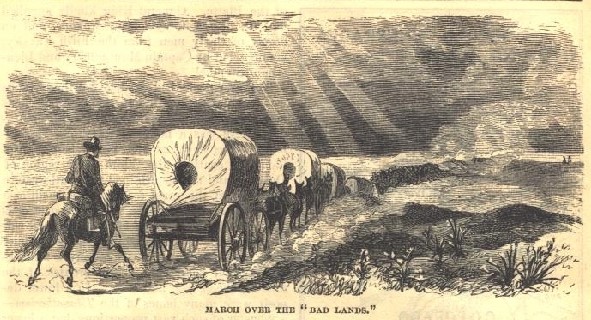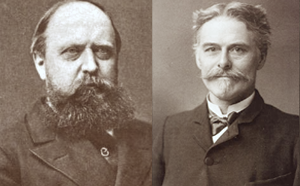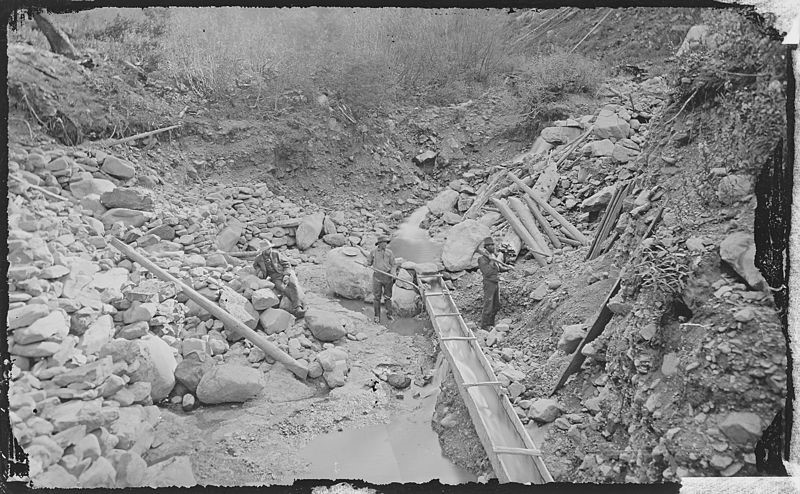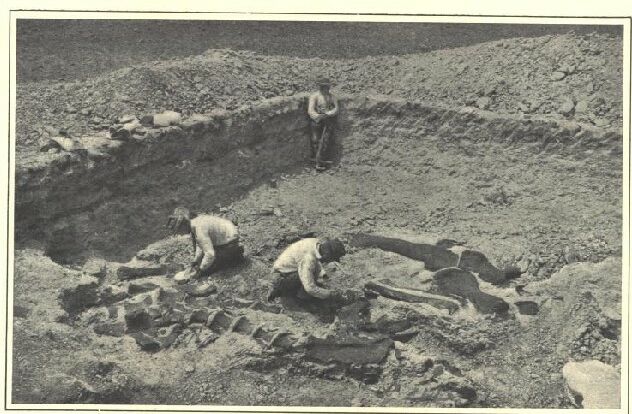A Settler Colonial View on the “Bone Wars”
by Alexander Bräuer, 12/08/2016.
Summary
Edward Cope vs. Othniel Marsh. That is the easy but very persuasive abbreviation mostly used in explaining the complex and diverse phenomenon of the so called “bone wars.” The (sometimes unfair) competition between two scientists over the fossils excavated in the late 19th century in the American West became legendary and inspired the imagination of the American public by telling about the new profession of digging for a mostly unknown world filled with huge and mysterious creatures: dinosaurs and prehistoric animals. But Cope and Marsh were not the only ones searching for fossils in the US and in the end a new scientific discipline in America, Paleontology, developed out of the rush for fossils. This article won’t retell the well-known story of the rivals, but rather regard the “bone wars” in the context of the settlement of Colorado, Nebraska and Wyoming in the late 19th century – a conjunction already found earlier in the century when Albert Koch excavated fossil bones in Missouri, then the colonial frontier. The explorations by fossil hunters were a compelling story as well as a structural process. Therefore, this article tackles Cope, Marsh, and explorations of other fossil hunters as a part of settler colonialism and tries to explore which role fossil hunters like Cope and Marsh played in the advancement of European settlement and the genocide on the indigenous population.
“Settler Colonialism is a Structure, not an Event”
Patrick Wolfe
The competition between Edward Drinker Cope and Othniel Charles Marsh (also dubbed “Bone Wars” or “Great Dinosaur Rush”) is without a doubt a fascinating and compelling subject. At the end of the 19th century both rivals were competing over fossils in the American West, mainly Colorado, Nebraska and Wyoming. American newspapers followed the hunt for fossils and the competition between the two rivals closely and helped to kick-start a fascination for dinosaur fossils and their discoverers which lasts until today. The amount of fossils, the right to name new species, the categorization of the ancient animals as well as the value of such bones were points – or rather ‘bones’ – of contention between Cope and Marsh, who were prepared to employ rather questionable means in order to outpace each other. Both craved for the recognition of their achievements by the young scientific community and the American public.
Thus, a fascinating story about betrayal, professional jealousy, dangerous expeditions in the wilderness, ancient fossils, and the origin of a new scientific discipline, American Paleontology, unfolds. Today, the legacy of this time is not only visible in the display of fossils from these hunts by museums around the world, but the story of their discovery is being retold again and again – as for example in the new posthumous novel Dragon Teeth by Michael Crichton, forthcoming in May 2017 – in popular literature, TV and other media.
However, in the following article I will focus my analysis on a mostly overlooked aspect of the competition between Cope and Marsh: the connection between the bone wars and settler colonialism. Thus, I won’t focus on the dynamic of Marsh and Cope’s adventures, instead trying to reveal the common elements that characterized the hunting for fossils and putting them into a broader historical context of the history of the American West. By analyzing these common elements, it becomes clear how ideas of American antiquity were shaped by and founded on settler colonialism itself.
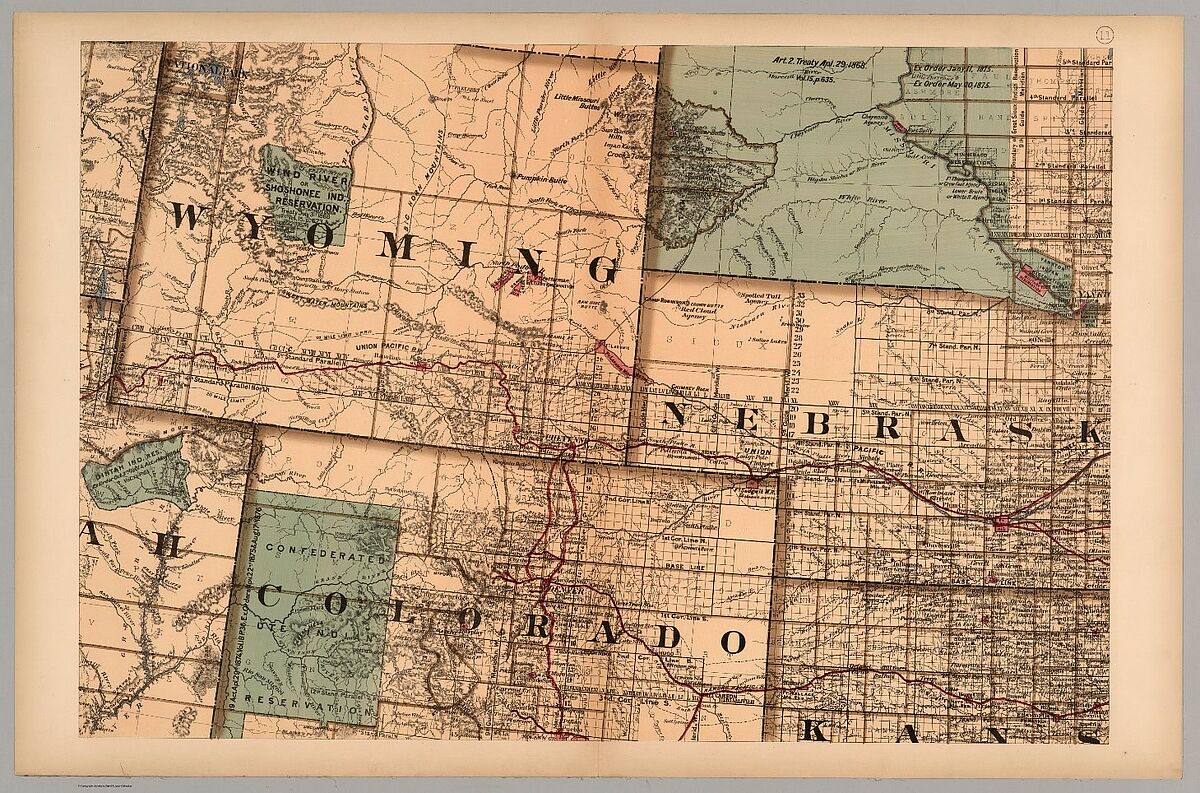
Setting the Scene: Colorado, Nebraska, and Wyoming in the late 19th century
The sites of the fossil finds were very much a contested part of the American frontier. After the Union Pacific railroad opened up the area for settlement, several other railroad links like the Burlington and Missouri River Railroad expanded the network and supported an agricultural settlement. Small farms as well as cattle holdings became popular and sprung up in areas close to the new railroads. Adding to the pressure of agricultural settlement, Wyoming and especially Colorado experienced multiple gold rushes in the last four decades of the 19th century. The traditional owners of the land, like the Lakota people of the Great Sioux Nation, the Cheyenne, and Arapaho, were fighting every step of the invasion and tried to protect their way of life. They attacked the railroads, as probably the most critical part of the infrastructure of the invasion, interfered with exploration parties, besieged outposts of the American military and harassed settlers.
Capitalism, Settler Colonialism and Fossil Hunting
Fossil hunting was an integral part of the capitalistic settler colonial system. The distinction between gold digging and fossil hunting seemed insignificant as figure 4 and 5 show and the indigenous tribes perceived both as practices of dispossession.[1] Fossils and other, more recent, bones collected in graves and on battle fields were used by settlers and scientists as a way of making money. They were dug out, arranged, presented and sold to the highest bidders. The Lakota were not entitled to any kind of reward (or only small sums in return for information on sites) from the sale because – following a settler colonial logic – they didn’t recognize the true (i. e. capitalistic) value of the fossils. The dispossession of land followed a similar logic: according to the colonial mythology, Indians were using their land insufficiently, therefore it was only logical and sensible to take it away and establish a more efficient western agriculture. In such a settler colonial logic the acknowledgement of other non-European economic systems which formed the successful basis for many indigenous societies had no place.
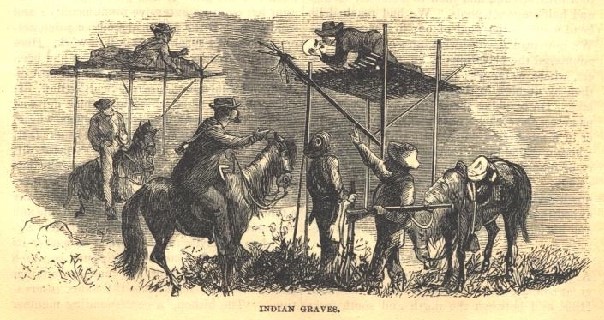
The scholar Kyla Schuller wrote on the perspective of the Lakota people on fossils: “the geological resources spoke to the omnipresence of the gods, not of the prehistoric past.” And referring to historian Adrienne Mayor she argued that “the Lakota in fact incorporated fossils into their religion, medicine, scientific, and historical accounts. The Lakota had a system of comparative anatomy and linked prehistoric fossils with contemporary plains creatures such as the buffalo and ox. She (Adrienne Mayor) notes that fossils played a central role in Lakota origin stories, which understood these tremendous beasts to have once dwelled in an inland sea that covered the plains.”[2] Thus, fossils played an important role for the Lakota people as a cultural nexus between animals, land, and the people. They were considered to be part of the land. The destruction of such a connection by removing the bones was perceived as an act related to the dispossession of land.
Fossil Hunters and the Settler Colonial Infrastructure
This perception was further enhanced by the strong cooperation between fossil hunters and the colonial infrastructure of dispossession. Railroads, telegraphs, military, settlers, and the Bureau of Indian Affairs, all played an important role in the realization of fossil expeditions. Railroads enabled the speedy and cheap transfer of the expeditions close to the excavation sites as well as allowing for the easy removal of their skeletal exploits. Telegraph lines further ensured the communication between the expeditions and the sponsors in the east. Soldiers provided protection and sometimes accompanied the fossil hunters helping with the excavation. Military forts and the stations of the Bureau of Indian Affairs were important staging posts for the expeditions. But the fossil hunters not only benefitted from the settler colonial infrastructure, they also contributed to it. Their economic investment helped to maintain and develop the infrastructure (expeditions were an expensive endeavor). Settlers could find temporary work with the expeditions. Furthermore, strategically valuable information for the benefit of settler colonialism were collected and could include: the quality of land for settlement; the occurrence of precious minerals; new pathways into unknown territories; and the disposition of the local Indians. Fossil hunters produced maps, hunted buffalos, rode the railroad and were actively engaged in the dispossession of Indian people in the American west.
As bizarre as they may sound, the Bone Wars illustrate some of the micropolitics of excavations as part of a national project of taking possession of the American West of ‘digging’, i.e. knowing the land. Marsh, Cope and other paleontologists did not, as the journalist Mark Jaffe writes, “unwittingly walk[…] into the middle of a conflict.”[3] They were an active part of the conflict. Modern reflections on the fossil hunters tend to disregard such an involvement. Jaffe, like many other authors and producers, focuses on the personal rivalry between Marsh and Cope. But such an anectodal perspective fails to recognize the broader scenario in which the rivalry was merely one element: competition drove not only fossil hunters but also the development of other parts of settler colonialism like railroads, telegraphs, agricultural and mining operations, explorations, or other scientific expeditions. Competition is the motor of a capitalist economy, as the oil boom beginning around the same time demonstrates. But a biographical approach which disconnects the expeditions from their settler colonial context provides a much better narrative for our imagination of how the modern field of American paleontology was created. It serves the self-image of science as an unpolitical pursuit.
NOTES
[1]Schuller, Kyla, p. 13.
[2]Schuller, Kyla, p. 11.
[3] Jaffe, Mark, p. 114.
LITERATURE:
Jaffe, Mark. The Gilded Dinosaur: The Fossil War Between E. D. Cope and O. C. Marsh and the Rise of American Science. New York: Crown Publishing Group 2000.
Schuller, Kyla. “The Fossil and the Photograph: Red Cloud, Prehistoric Media, and Dispossession in Perpetuity.” Configurations 24:2 (2016), p. 229-261.
Wolfe, Patrick. "Settler Colonialism and the Elimination of the Native". Journal of Genocide Research 8:4 (2006), p. 387-409.
ILLUSTRATIONS
Figure 1: Betts, Charles W. “The Yale College Expedition of 1870”. Harper’s New Monthly Magazine 43 (1871), p. 663-671, p. 665.
Figure 2: https://en.wikipedia.org/wiki/Bone_Wars#/media/File:Cope-and-marsh.png; accessed 12/08/2016.
Figure 3: http://www.davidrumsey.com/luna/servlet/detail/RUMSEY~8~1~229659~5508249:-Map-11---Wyoming,-Nebraska,-Colora#; accessed 12/08/2016.
Figure 4: https://commons.wikimedia.org/wiki/File:Gold_mining_in_Boren%27s_Gulch._La_Plata_County,_Colorado_-_NARA_-_517143.jpg; accessed 12/08/2016.
Figure 5: https://commons.wikimedia.org/wiki/File:Bone_Cabin_Quarry_1898.jpg; accessed 12/08/2016.
Figure 6: Betts, Charles W. “The Yale College Expedition of 1870”. Harper’s New Monthly Magazine 43 (1871), p. 663-671, p. 665.

